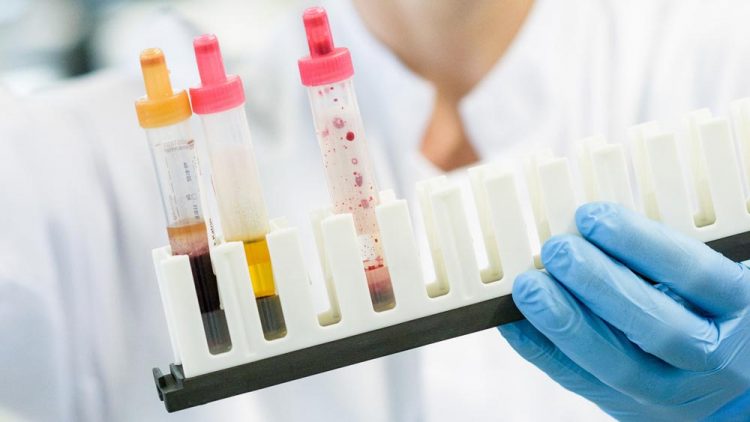Phagocytes versus killer cells – A closer look into the tumour tissue

© UDE/Frank Preuß
„It was already known that cancer patients that have many of these immune cells migrated into their tumour tissue have reduced survival rates”, says Sven Brandau, head of the Department of Experimental und Translational Research.
„Therefore, experts suspected that those phagocytic cells, the so-called neutrophils, could inhibit the fight of the killer immune cells against cancer.“
Using advanced microscopy technologies and analyses, Brandau and his collaborators have now uncovered the interaction between the neutrophils and killer cells in tumour tissue. „We were able to show that the neutrophils actually touch the killer cells and prevent the killing of the cancer cells.“
In future investigations, the researchers at the UK Essen would like to block the entry of the phagocytes into the tumour tissue in order to develop novel immunotherapies against cancer.
Cooperation partners in the study were teams from dermatology and experimental immunology.
Editor: Milena Hänisch, Phone +49 201/723-6274, milena.haenisch@uk-essen.de
Translation: Alexandra Niessen, Phone +49 203/37 9-1487, alexandra.niessen@uni-due.de
Prof. Dr. Sven Brandau, Phone: +49 201/723-3193, Sven.brandau@uk-essen.de
Media Contact
More Information:
http://www.uni-duisburg-essen.de/All latest news from the category: Life Sciences and Chemistry
Articles and reports from the Life Sciences and chemistry area deal with applied and basic research into modern biology, chemistry and human medicine.
Valuable information can be found on a range of life sciences fields including bacteriology, biochemistry, bionics, bioinformatics, biophysics, biotechnology, genetics, geobotany, human biology, marine biology, microbiology, molecular biology, cellular biology, zoology, bioinorganic chemistry, microchemistry and environmental chemistry.
Newest articles

Superradiant atoms could push the boundaries of how precisely time can be measured
Superradiant atoms can help us measure time more precisely than ever. In a new study, researchers from the University of Copenhagen present a new method for measuring the time interval,…

Ion thermoelectric conversion devices for near room temperature
The electrode sheet of the thermoelectric device consists of ionic hydrogel, which is sandwiched between the electrodes to form, and the Prussian blue on the electrode undergoes a redox reaction…

Zap Energy achieves 37-million-degree temperatures in a compact device
New publication reports record electron temperatures for a small-scale, sheared-flow-stabilized Z-pinch fusion device. In the nine decades since humans first produced fusion reactions, only a few fusion technologies have demonstrated…





















